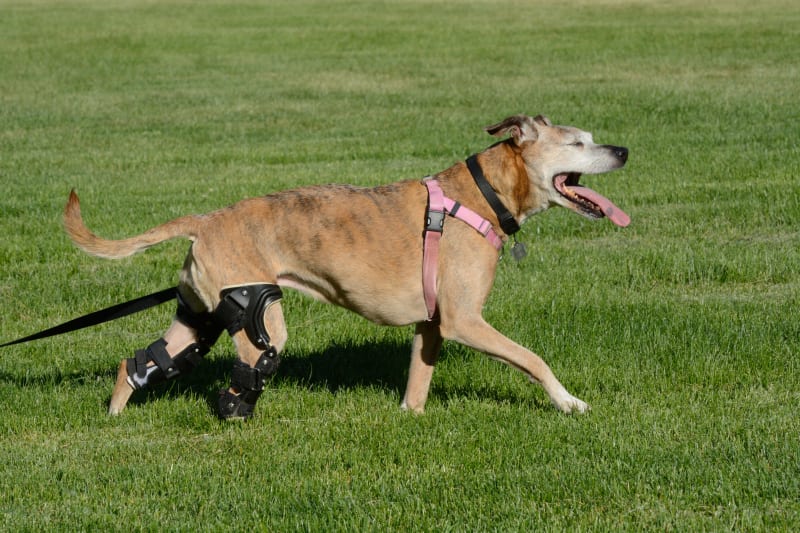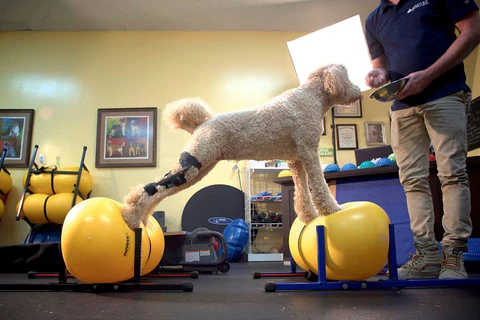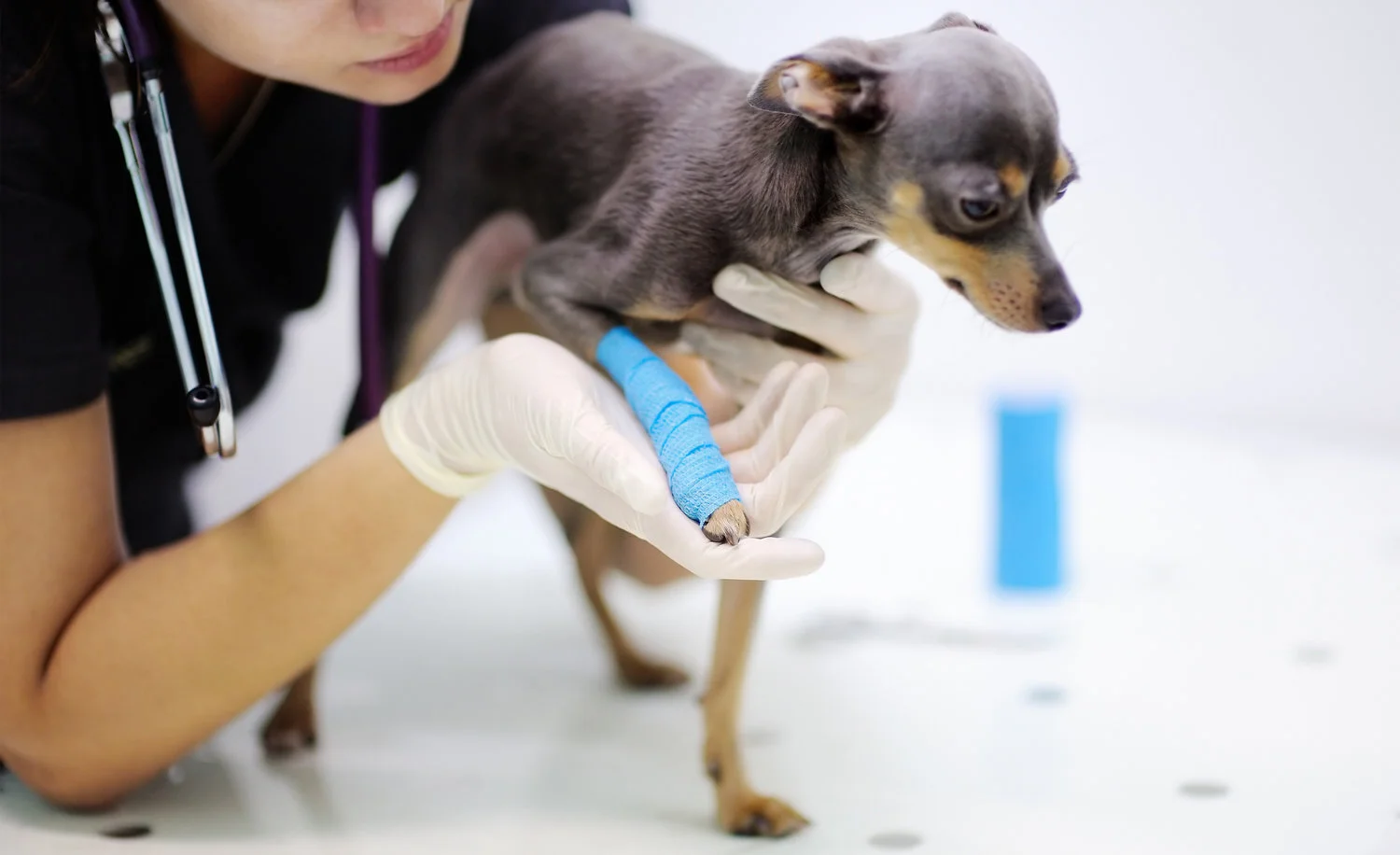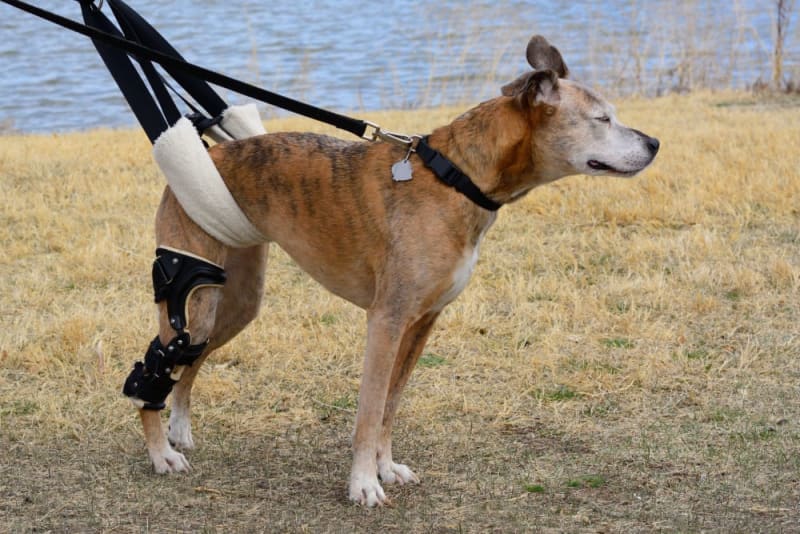ACL Tear & Injury: Symptoms & Recovery – Whether your dog is limping, not playing, or playing not like their bouncy, happy self, it is only natural to be concerned. An ACL Tear – or a cranial cruciate ligament (CCL) injury is one of the most common causes of sudden back leg lameness in dogs. It is not easy to hear because it is a serious injury. The good news is, however, as follows: with the proper treatment of the ACL and time to heal, most dogs experience full recovery and can resume living complete and happy lives.
Today, we are going to discuss what an ACL tear is, how to identify the symptoms, and what a recovery would be like – whether your dog requires ACL surgery or something less invasive.
What Is An ACL Tear in Dogs?
As in human beings, dogs have a ligament within the knee that makes everything stable; it is known as the cranial cruciate ligament (CCL), although most people refer to it as ACL. This ligament attaches the thigh bone to the shin bone and prevents the knee from sliding out of position. The knee becomes unstable and painful when it stretches, frays, or tears.
Some dogs end up injuring themselves either in the process of chasing a ball or simply falling when they jump off the couch, and some wear and tear their ligaments as they grow old. In any case, an ACL injury implies that your dog will not be able to support their weight with their injured knee the way they used to.
Common Signs and Symptoms
All dogs display pain slightly differently, but in case your dog has an ACL injury, you may see some or all of the following:
- Limping or favoring one back leg.
- Difficult to get up after rest.
- Aversion to running, jumping, or climbing stairs.
- Seated in one position with one leg straightened to the side.
- Swelling around the knee
- Strolling with a toe-touching step – scarcely straining on one leg.
- Weakness in the muscles of the injured leg.
In a full tear, dogs tend to raise their leg entirely and even jump onto three legs. On-and-off limping that never really disappears may be seen in partial tears. In case your dog exhibits these symptoms, then you should visit your vet in the near future. The sooner it is caught, the better.
Why Do Dogs Get ACL Tears?
Any dog can have an ACL injury, although some are more at risk than others. Risk factors and common causes are:
Age: Dogs that are middle-aged and old have a higher tendency for the weakening of the ligament.
Breed: Labs, Golden Retrievers, Rottweilers, and Boxers are more likely.
Weight: Fat dogs strain their knees.
Activity Level: Very active dogs may overstrain or twist the ligament.
Genetics: There are dogs with joint structures that predispose them to weakness.
It is not always a dramatic injury; sometimes it is small microtears that occur over months and years, and after some time, they result in a complete tear.
Treatment of ACL in Dogs
After your vet has determined that your dog has an ACL Tear, the doctor will discuss with you the most appropriate ACL treatment plan. The strategy is based on their size, age, health, and level of activity.
1. Non-Surgical Treatment
In smaller dogs (a little less than 25-30 pounds), in the elderly, or with a partial tear, your veterinarian might suggest a non-surgical plan which includes:
Strict Rest: No running, no jumping, no rough play for several weeks.
Pain Management: Drugs that are prescribed to reduce pain by your veterinarian.
Weight management: An additional few pounds will hamper recovery.
Physical therapy: Exercises and massage, which may involve an underwater treadmill, can also be used to restore strength.
Braces or aids: Some dogs benefit from a special brace on the knee to provide additional support.
Conservative therapy can be successful – but it requires time. You will need to stick closely to the rest and rehab plan and stay consistent with it.
2. Surgical Options (ACL Surgery)
For most medium and large dogs or any dog with a complete tear of the ligament, ACL surgery normally provides the most appropriate method of providing stability and arthritis prevention. Your vet may refer to several types of procedures:
Extracapsular Repair (Lateral Suture): This is a procedure that engages a strong line of nylon to imitate the work of this ligament. Large enough for small or medium dogs.
TPLO ( Tibial Plateau Leveling Osteotomy): It is a surgical restructuring of the tibial bone to cause the joint to be stable without the aid of the ligament. Usual with larger non-sedentary dogs.
TTA (Tibial Tuberosity Advancement): It is another procedure that alters the loading of the knee.
There is nothing to be worried about – your vet or orthopedic doctor will be able to select the correct option in regards to the anatomy and lifestyle of your dog.
The Recovery Process
The magic happens when you are recovering. The surgery or the conservative plan will make your dog heal; it is going to take time, but it will be worth it.
The First Few Weeks
Your dog will require much rest. Imagine rehabilitation rather than punishment. No stairs, no furniture, very few bathroom breaks on a short leash, and plenty of cozy naps.
Ice, pain medication can be used to alleviate swelling and make your pup feel better. This is a phase of waiting and guarding.
Weeks 4-12
As the progress of healing is in progress, your vet might suggest short and controlled walks, a light range of motion exercises, and even hydrotherapy (underwater treadmill). You will begin to find your dog on the leg more, but never hurry it. The ligament (or repair done to it) is still healing, even when they feel good.
3-6 Months and Beyond
Most dogs are walking well once more by approximately three months. It takes 4 to 6 months to recover and be able to run and play again.
Continue with the rehab, feed your dog a joint-friendly diet, and keep him at a healthy weight. Some minor modifications at the home level, such as the use of carpet floors to provide traction and ramps instead of stairs, can go a long way.
Conclusion
An ACL Tear can make you think that there is an end to the active life of your dog – at least it should not be so. When appropriate ACL intervention is done, with the help of care and patience, most dogs are taken to continue running, playing, and living just as they used to. You should not wait in case you believe that your dog has an ACL injury. Talk to your vet – early action means a faster, happier recovery.
FAQs
Can my dog recover without ACL surgery?
Sometimes, yes. Smaller or older dogs with partial tears may recover well with rest, weight control, and physical therapy. But for larger or very active dogs, ACL surgery usually offers the best chance of full recovery.
How long does it take to recover from ACL surgery?
Most dogs start using the leg within a few weeks, but full recovery can take 4-6 months. Following your vet’s recovery plan – especially the restricted activity and rehab exercises – makes all the difference.
What happens if I don’t treat my dog’s ACL tear?
Without treatment, the knee remains unstable, leading to constant pain, arthritis, and potential injury to the other knee. Your dog’s quality of life will decline over time, so it is best to act quickly.
How can I help my dog recover at home?
Provide a soft, non-slip surface for walking, use baby gates to block stairs, stick to the vet’s instructions, and keep your dog calm and comfortable. Give lots of gentle affection; emotional comfort matters, too.









